School arts and music programs create extraordinary moments of student creativity and achievement every day—stunning visual artwork that transforms blank canvases into emotional expressions, musical performances that demonstrate months of dedicated practice, theatrical productions that bring stories to life through collaborative effort, and dance recitals showcasing artistic excellence. Yet too often, these remarkable creative achievements receive fleeting recognition, celebrated briefly during performances or exhibitions before fading from institutional memory as programs move forward to next productions and competitions.
This recognition gap significantly undermines arts education value. When creative achievements disappear quickly while athletic accomplishments remain permanently visible in trophy cases and academic honors persist on displayed honor rolls, schools inadvertently communicate that artistic excellence matters less than other achievement domains. Students, families, and communities deserve better—recognition systems celebrating creative accomplishment with the same permanence, visibility, and engagement afforded to other forms of student excellence.
Why Arts and Music Recognition Matters
Creative programs build critical skills including discipline, collaboration, creative problem-solving, cultural awareness, and self-expression that benefit students throughout their lives. Comprehensive recognition validates these programs' educational importance while motivating continued excellence across all artistic disciplines. Digital showcase solutions like Rocket Alumni Solutions enable schools to celebrate creative achievements permanently through engaging multimedia presentations that bring performances, exhibitions, and artistic development to life in ways traditional recognition methods cannot match.
The Arts Recognition Challenge in Schools
Most schools struggle to provide arts and music programs with recognition comparable to what athletics and academics receive, creating unintentional hierarchies that undervalue creative achievement despite its educational significance.
Space and Visibility Limitations
Physical Display Constraints: Traditional arts recognition faces severe limitations. Artwork displayed on hallway walls gets replaced by newer pieces within weeks or months. Performance programs stack in boxes after concerts end. Theater production photos sit in yearbooks reaching limited audiences. This constant turnover means individual student achievements receive brief visibility before disappearing, preventing the lasting recognition creative work deserves.
Unequal Recognition Investment: Walk through typical high schools and compare recognition investments across domains. Athletic trophy cases feature permanent displays showcasing decades of championships. Academic honor roll displays consistently highlight scholarly achievement. Arts programs, despite equal educational importance, often receive temporary bulletin boards or rotating displays that never provide the comprehensive, permanent celebration warranted by student creative accomplishments.
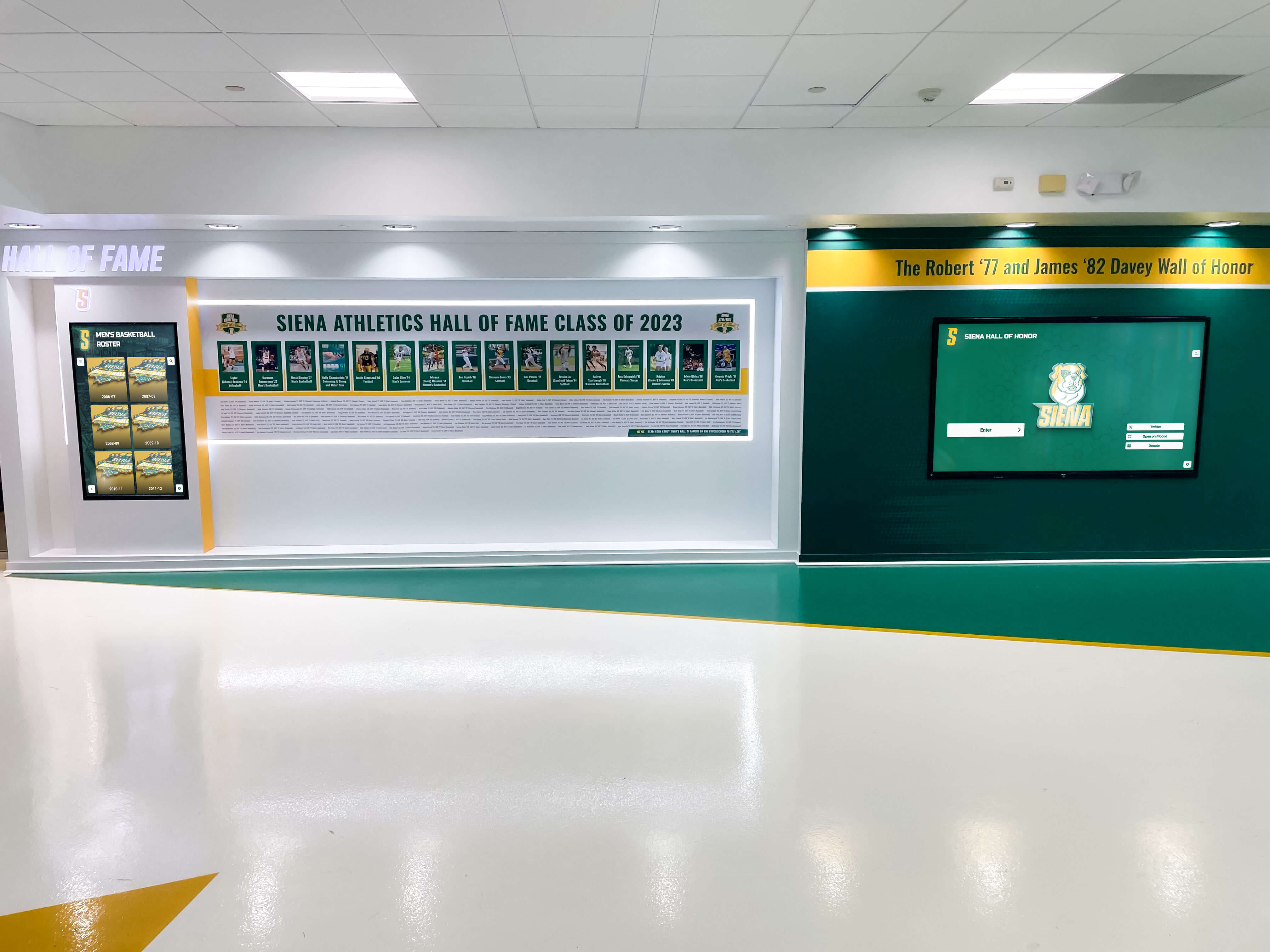
Competition for Limited Space: As schools add programs and student populations grow, physical recognition space becomes contested territory. Arts programs compete with athletics, academics, and administrative needs for limited hallway and lobby space. This competition typically disadvantages creative programs, reinforcing perceptions that artistic achievement holds secondary importance compared to other accomplishments.
Documentation and Preservation Challenges
Performance Ephemeral Nature: Unlike trophies that physically exist after competitions or test scores providing permanent records, performances disappear the moment final notes fade or curtains close. Without systematic documentation, these achievement moments exist only in memories, preventing future students from experiencing or understanding program excellence spanning previous years and decades.
Multimedia Content Underutilization: Schools often record performances, photograph exhibitions, and document creative processes but rarely leverage this rich multimedia content effectively. Videos sit on hard drives or unlisted YouTube channels. Photos remain in teacher computers. This valuable documentation could inspire future students and celebrate creative excellence, yet organizational and technological challenges prevent effective utilization.
Historical Context Loss: Arts programs build traditions through signature performances, recurring exhibitions, evolving production quality, and student creative development over time. Without comprehensive documentation connecting current programs to historical precedents, schools lose important context demonstrating sustained creative excellence and program evolution inspiring current participants.
Resources on fine arts program recognition demonstrate how comprehensive approaches ensure creative achievements receive acknowledgment equal to accomplishments in other domains.
What Comprehensive Arts and Music Showcases Include
Effective digital showcases celebrate diverse creative achievements across all artistic disciplines through multimedia presentations engaging multiple stakeholder groups.
Visual Arts Recognition
Exhibition Documentation: Comprehensive showcases preserve complete exhibition records including high-resolution artwork images captured professionally, artist statements explaining creative process and inspiration, technical details about medium and techniques employed, awards and recognition earned at competitions or exhibitions, and contextual information about assignments or artistic movements explored. This thorough documentation transforms brief exhibition moments into permanent records celebrating creative excellence appropriately.
Portfolio Development Archives: Digital systems enable tracking individual student artistic development across years. Sequential portfolios show skill progression from introductory through advanced coursework, demonstrating growth that validates arts education value beyond individual finished pieces. This longitudinal view celebrates not just products but creative development processes essential to artistic education.

Student Artist Profiles: Comprehensive profiles for student artists include biographical information and creative interests, complete portfolios spanning all coursework, awards and exhibition participation documentation, artist statements reflecting on creative philosophy, and post-graduation pathways showing how creative foundation supports diverse careers. These profiles honor individual students while demonstrating program impact on creative development.
Exhibition Virtual Galleries: Digital showcases create permanent virtual galleries enabling remote viewing by families, alumni, and communities unable to attend in-person exhibitions. Virtual galleries extend recognition reach dramatically while preserving exhibition experiences beyond brief physical display periods.
Musical Performance Celebration
Concert and Recital Documentation: Comprehensive musical recognition includes professionally recorded performance videos capturing technical skill and artistic expression, program documentation listing repertoire and performers, individual and ensemble performer recognition ensuring every participant receives acknowledgment, technical performance notes about challenging pieces or musical achievements, and contextual information about composers, musical periods, or thematic programming. This multilayered documentation transforms single performances into comprehensive celebration of musical excellence.
Competition and Festival Recognition: Musical programs frequently compete at district, regional, state, and national festivals where students earn ratings, awards, and performance honors. Digital showcases systematically document all-state selections and honors, superior and excellent ratings at festivals, solo and ensemble competition achievements, adjudicator comments highlighting strengths, and performance recordings from competition settings. This recognition validates competitive excellence while inspiring future student participation.
Musical Ensemble Recognition: Beyond individual performers, comprehensive showcases celebrate ensemble achievements including concert band, marching band, and symphonic band accomplishments, choir and vocal ensemble performances and competitions, orchestra concerts and festival participation, jazz band performances and competition success, and smaller chamber ensembles like string quartets and brass quintets. Ensemble recognition honors collaborative musical experiences central to performance education.
Guidance on student recognition program implementation provides frameworks applicable to comprehensive arts and music celebration across all creative disciplines.
Theater and Performing Arts Documentation
Production Preservation: Theater productions represent months of collaborative creative work from students across multiple specialties. Comprehensive showcases document complete productions through performance recordings capturing final shows, rehearsal footage showing creative process development, cast and crew complete listings ensuring all contributors receive recognition, production photos highlighting memorable scenes and technical achievements, director’s notes explaining artistic vision and educational goals, and program documentation preserving contextual information.

Technical Theater Recognition: Behind every production stand dedicated students creating sets, managing lighting, engineering sound, designing costumes, applying makeup, and coordinating all technical elements. Digital showcases provide technical theater with visibility matching performer recognition through stagecraft portfolios showing set design and construction, lighting design documentation with plot diagrams and production photos, sound engineering achievements and equipment operation excellence, costume design portfolios with sketches and finished products, and stage management recognition highlighting coordination essential to production success.
Performance Development Tracking: Comprehensive systems track individual student development across multiple productions, roles, and technical specialties. This longitudinal view demonstrates how theater education builds confidence, collaboration skills, creative problem-solving abilities, and artistic expression capabilities valuable throughout students’ personal and professional lives.
Dance and Movement Recognition
Recital and Performance Documentation: Dance programs deserve recognition infrastructure matching other performance disciplines. Comprehensive showcases include choreography documentation identifying student and professional choreographers, performance video recordings capturing technical skill and artistic expression, dancer recognition ensuring every performer receives acknowledgment, competition and festival achievement documentation, and contextual information about dance styles, musical selections, and choreographic intent.
Choreography Celebration: Student choreographers creating original work demonstrate advanced creative and technical skills deserving special recognition. Digital platforms showcase choreographer profiles and creative philosophy, video documentation of choreographed pieces, dancer testimonials about creative process, competition recognition for choreography excellence, and evolution tracking showing choreographic development across years.
Implementing Digital Arts and Music Showcases
Schools successfully implementing comprehensive creative program recognition follow systematic approaches addressing content development, technology selection, and community engagement.
Planning and Content Strategy
Stakeholder Engagement: Begin implementation by involving arts and music faculty in planning processes. Teachers provide essential input about documentation priorities, understand which achievements deserve special recognition, know historical program context worth preserving, and identify barriers preventing effective recognition historically. Student input through arts clubs or student leadership ensures recognition resonates with those it celebrates.

Content Development Priorities: Start with current year documentation establishing systematic processes before attempting historical content development. Professional-quality content requires planning for performance recording with proper audio and video equipment, artwork photography under appropriate lighting conditions, program and roster documentation compiled systematically, artist and performer statements captured while experiences remain fresh, and awards and recognition documentation maintained consistently. Once current systems function effectively, schools can systematically add historical content expanding recognition breadth.
Technical Capability Assessment: Evaluate current capacity for producing quality multimedia content. Many schools possess necessary equipment—cameras, video recording capability, audio equipment—but lack systematic processes for content creation. Consider student involvement through media classes or tech clubs, volunteer parent photographers with professional equipment and skills, partnerships with community professionals offering services at reduced costs, and equipment investment prioritizing quality documentation enabling professional recognition presentations.
Technology Platform Selection
Purpose-Built Versus Generic Solutions: Schools implementing arts recognition face technology choices. Generic digital signage platforms require extensive customization for arts showcase needs while lacking features specific to creative recognition. Purpose-built educational recognition platforms like those from Rocket Alumni Solutions provide functionality designed specifically for school recognition including intuitive content management requiring no technical expertise, templates optimized for arts and music showcase needs, multimedia capability handling video, audio, and images seamlessly, searchable databases enabling visitors to find specific students or performances, and cloud-based architecture eliminating server maintenance and ensuring accessibility.
Display Hardware Considerations: Touchscreen displays range from 43-inch screens suitable for individual exploration to 75-inch displays supporting group viewing during events and gatherings. Consider placement context when selecting sizes. Main lobbies and performance spaces benefit from larger displays ensuring visibility. Arts classrooms and specialized spaces suit smaller interactive displays encouraging detailed exploration. Commercial-grade displays designed for continuous operation ensure reliability in educational environments with 50,000-70,000 hour lifespans before component replacement.
Resources on touchscreen software selection help schools evaluate options ensuring technology investments align with arts recognition program needs and long-term goals.
Strategic Display Placement
High-Traffic Location Priority: Position displays where they reach maximum audiences including main building entrances capturing all daily visitors, performing arts center lobbies providing extended viewing during performances when families gather, library and media center locations encouraging exploration during free periods, and cafeteria spaces reaching students daily. Multiple distributed displays ensure comprehensive program visibility across diverse school spaces and audiences.
Specialized Creative Space Integration: Beyond high-traffic areas, consider displays in spaces serving creative communities including visual arts classrooms and studios where current students see alumni work inspiring their development, music rehearsal room lobbies celebrating ensemble excellence, theater green rooms honoring production traditions, and dance studios showcasing performance lineage. These specialized placements inspire current program participants while celebrating creative heritage.
Accessibility and Interaction Design: Ensure display placement at heights accommodating various users including wheelchair accessibility meeting ADA requirements, viewing angles suitable for seated and standing audiences, and touchscreen positioning enabling comfortable interaction without physical strain. Thoughtful placement design ensures all community members can engage with recognition content comfortably.
Content Management and Ongoing Operation
Sustainable recognition programs require systematic content management processes ensuring consistent updates without overwhelming staff workloads.
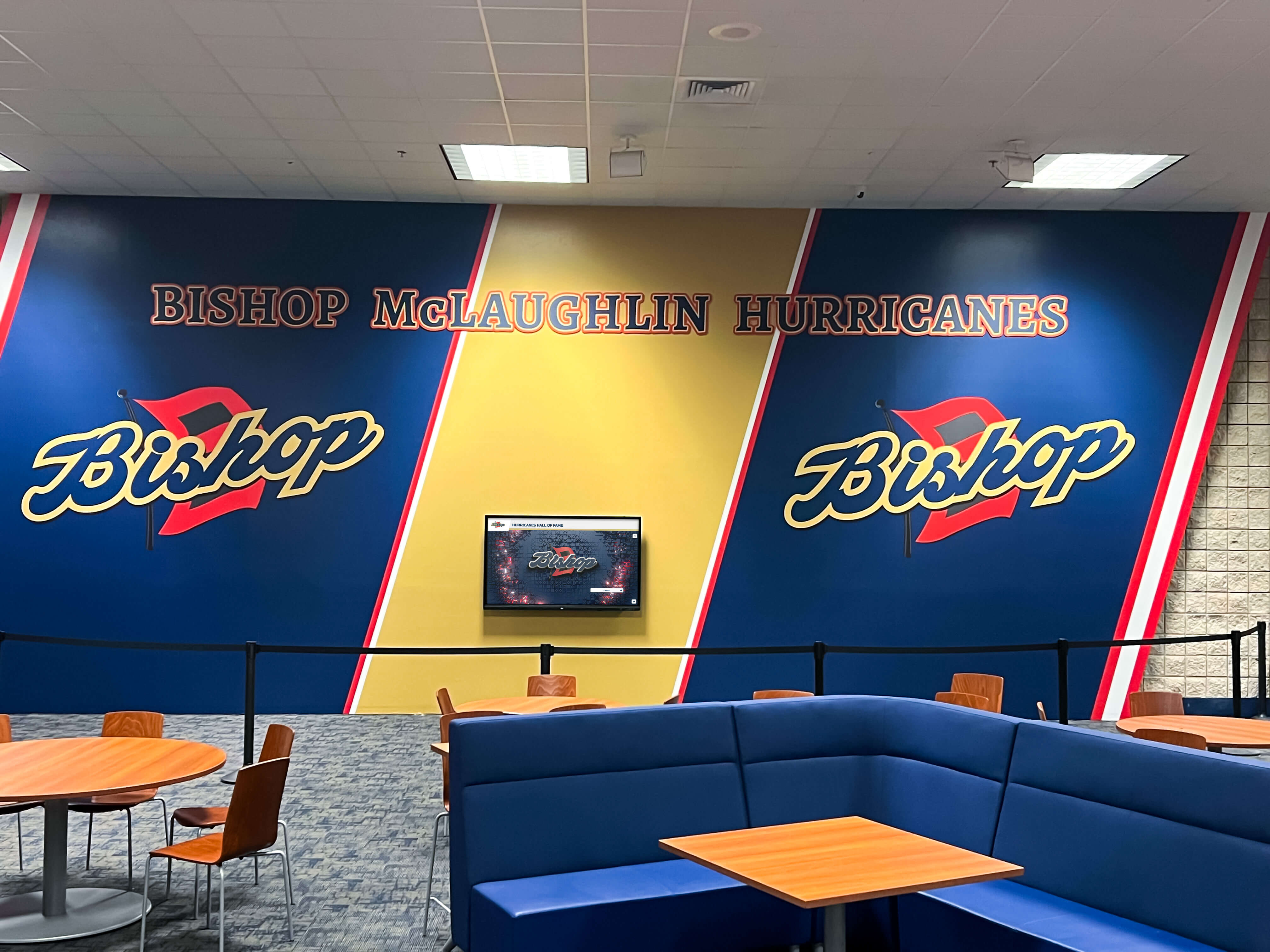
Establishing Content Workflows
Defined Responsibilities: Assign clear ownership for content management whether arts and music faculty manage content directly, administrative staff coordinate across programs, student workers handle routine updates under faculty supervision, or technology staff provide technical support while content owners maintain artistic control. Clear responsibility prevents recognition neglect while ensuring appropriate expertise guides presentation.
Systematic Update Schedules: Establish regular update rhythms aligned with arts program cycles. Add exhibition content immediately following art show conclusions, upload performance videos within weeks of concerts and productions, document competition achievements when students return from festivals, and feature seasonal highlights connecting recognition to current programming. Regular updates keep recognition current and relevant while demonstrating ongoing program vitality.
Quality Control Processes: Implement review procedures ensuring published content meets quality standards including image resolution suitable for large display screens, video and audio quality reflecting performance excellence appropriately, accurate spelling and grammar in all text content, appropriate permissions for student images and performances, and consistent formatting creating professional, cohesive presentations. Quality control maintains credibility essential for recognition program effectiveness.
Encouraging Community Contribution
Alumni Content Integration: Engage alumni in enriching historical documentation through reunion events where graduates share memories and memorabilia, online submission portals enabling alumni to contribute historical photos and programs, social media outreach requesting specific historical content about past productions or exhibitions, and recognition events celebrating milestone program anniversaries while gathering historical documentation. Alumni often possess irreplaceable historical materials and context unavailable through school records alone.
Family Involvement: Enable families to contribute performance recordings from audience perspectives, candid photos capturing memorable moments, testimonials about student creative development, and historical program documentation when family members attended same schools. Family contributions extend documentation while strengthening community engagement and program support.
Student Archival Projects: Engage current students in developing historical recognition through research classes investigating program history, media students producing documentary content about creative program traditions, archives club members organizing historical materials systematically, and senior projects focused on comprehensive arts program documentation. These educational projects serve dual purposes—providing valuable learning experiences while building recognition content.
Resources on digital content management for recognition offer best practices ensuring sustainable operation without overwhelming staff workloads.
Creative Recognition Categories and Celebrations
Comprehensive showcases recognize diverse creative achievements ensuring all artistic excellence receives appropriate acknowledgment.
Individual Creative Excellence
Outstanding Artist Recognition: Annual awards celebrating exceptional creative achievement across all artistic disciplines including visual arts excellence in any medium, musical performance achievement in any ensemble, theatrical performance recognizing acting excellence, technical theater mastery across production specialties, choreography and dance performance achievement, and creative writing accomplishment. These pinnacle awards validate supreme creative accomplishment while inspiring excellence pursuit.
Improvement and Growth Awards: Recognize students demonstrating remarkable artistic development including most improved performer showing dramatic skill progression, dedication awards for sustained commitment despite challenges, breakthrough achievement celebrating artistic discoveries and advancement, and growth mindset recognition honoring students embracing creative risks. Growth-oriented awards ensure recognition remains accessible to developing artists at all skill levels.
Specialized Skill Recognition: Acknowledge mastery of specific artistic competencies including technical proficiency in demanding repertoire or techniques, artistic expression transcending technical execution, collaborative excellence in ensemble contexts, leadership in creative projects and productions, and innovative creativity bringing fresh perspectives to established forms. Specialized recognition highlights diverse excellence paths within creative disciplines.
Ensemble and Collaborative Recognition
Group Performance Excellence: Celebrate ensemble achievements including superior and excellent festival ratings, competition awards at local through national levels, performance milestones like complex repertoire mastery, community engagement through outreach performances, and sustained excellence across seasons. Ensemble recognition honors collaborative achievement central to many creative disciplines.
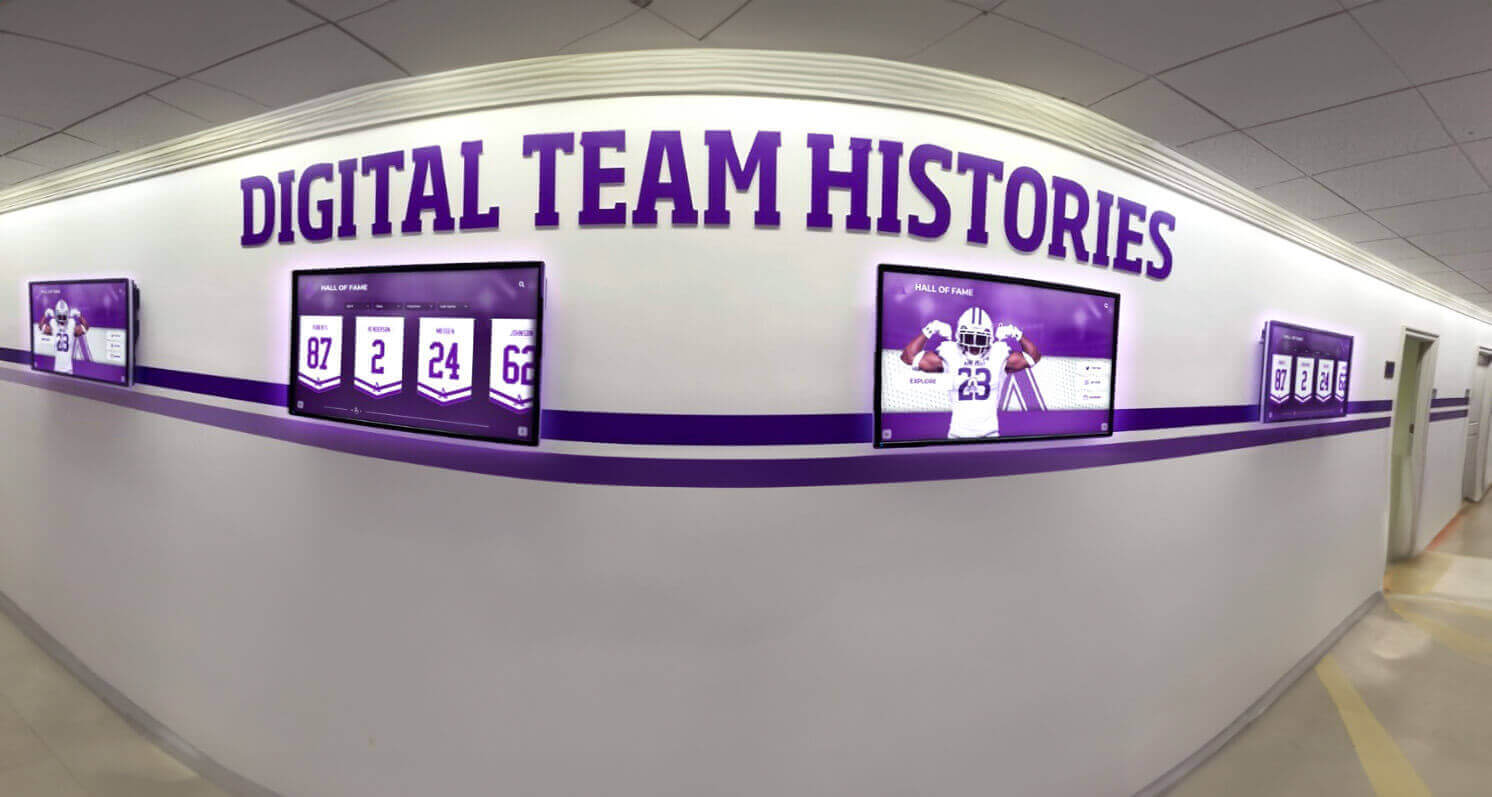
Production Team Recognition: Theater, musical theater, and large-scale creative productions involve dozens of students across specialties. Comprehensive recognition includes cast recognition for all performers regardless of role size, technical crew acknowledgment for all production specialties, student directors and choreographers leading creative elements, stage managers coordinating all production aspects, and pit orchestra musicians supporting musical theater. Complete recognition validates that productions require comprehensive team collaboration.
Cross-Disciplinary Creative Projects: Many outstanding creative works combine multiple artistic disciplines. Recognize multimedia art installations, musical theater combining music and drama, dance performances with original music composition, visual art inspired by literary works, and video art combining technology with creative expression. Cross-disciplinary recognition celebrates artistic integration reflecting how creativity transcends traditional boundaries.
Guidance on celebrating diverse student achievements ensures recognition systems acknowledge varied creative excellence forms rather than narrow achievement definitions.
Competition and External Recognition
Festival and Competition Achievement: Systematic documentation of competitive success including all-state music selections and participation, art exhibition awards at juried competitions, theatrical performance awards at drama festivals, superior ratings at music performance adjudications, and national competition recognition representing schools at highest levels. Competition recognition validates excellence through external evaluation by artistic professionals.
Scholarship and College Placement: Celebrate students earning college admissions and scholarships through creative portfolio strength including arts scholarship recipients continuing creative education, selective arts program admissions at specialized institutions, portfolio competition achievements, and continuing education commitments. Scholarship recognition demonstrates how arts education opens educational and career pathways.
Professional and Community Recognition: Acknowledge students receiving recognition beyond school contexts including community arts organization participation and awards, professional performance opportunities, published creative works, commissioned artwork or performances, and youth arts leadership roles. External recognition validates that school programs develop skills transferring to broader creative communities.
Integration with School Culture and Programming
Effective arts showcases extend beyond recognition displays to become integrated components of school culture and programming.
Connection to Arts Education Curriculum
Learning Outcome Documentation: Link recognition to arts education standards and learning outcomes students achieve. Showcase how visual arts curriculum develops creativity and technical skill, music education builds discipline and collaborative ability, theater programs develop confidence and communication skills, and dance education combines artistic expression with physical discipline. Connecting recognition to educational outcomes validates arts program importance beyond aesthetic appreciation.
Career Pathway Showcases: Demonstrate diverse career opportunities accessible through arts education including professional performing and visual artists, arts education and pedagogy, arts administration and nonprofit management, creative media and entertainment industries, therapeutic arts applications, and arts integration across professions. Career pathway information helps students and families understand practical value of creative skill development.
Alumni Success Stories: Feature alumni who pursued creative careers or integrated arts skills into other professions. Alumni profiles demonstrate long-term impact of arts education while inspiring current students through relatable success stories. Include professional artists, arts educators, designers, performers, and professionals using creative skills across diverse industries.
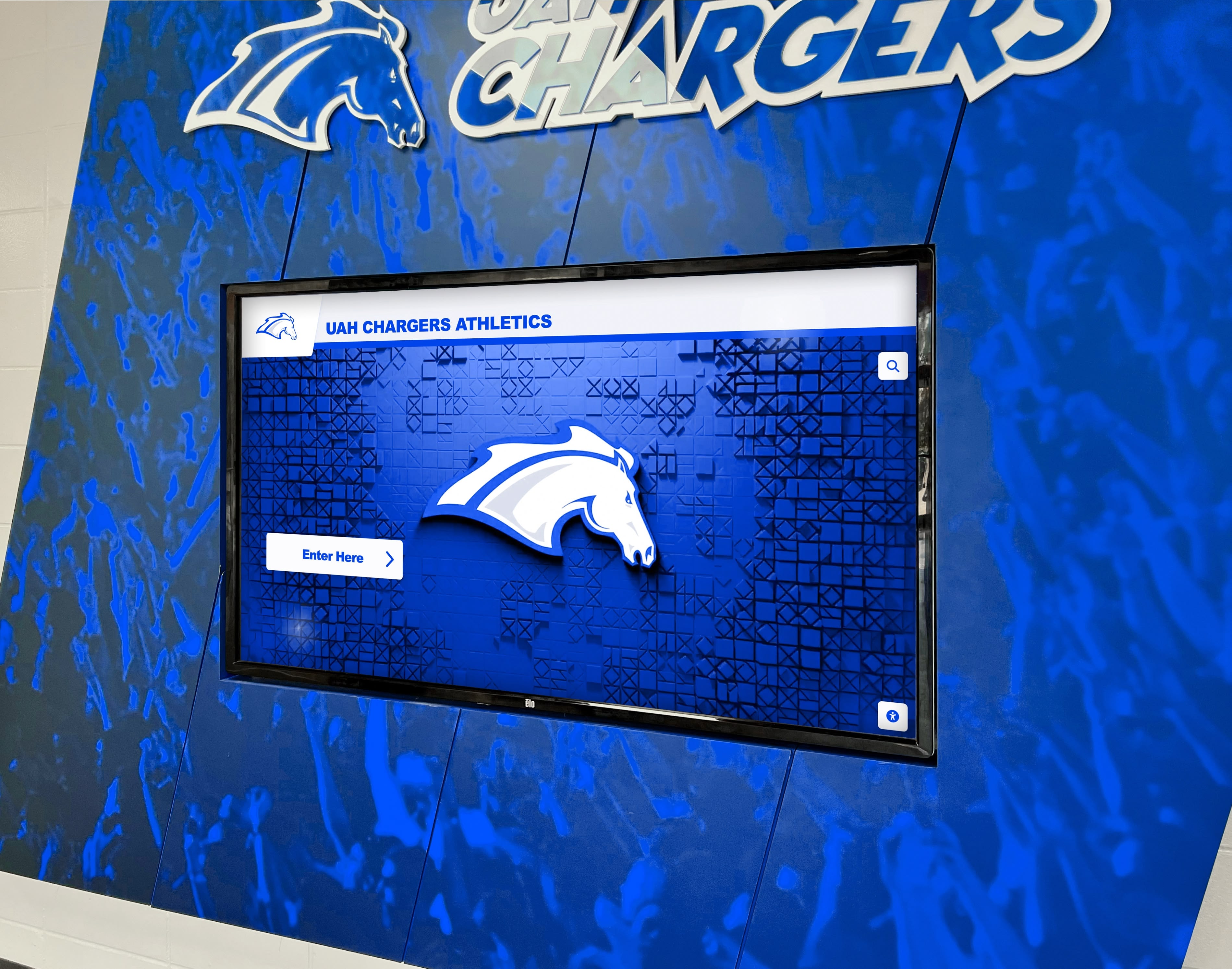
Event Integration and Promotion
Performance and Exhibition Enhancement: Use digital showcases to enhance live events through lobby displays before performances showing historical context and artist backgrounds, intermission content providing program notes and performer information, post-event highlights celebrating the evening’s achievements, and archival content connecting current productions to program traditions. Event integration enriches audience experiences while demonstrating comprehensive program excellence.
Recruitment and Advocacy Tools: Leverage showcases for program promotion during school tours showing prospective families comprehensive program offerings, at recruitment events demonstrating creative excellence and participation opportunities, in budget presentations providing tangible documentation of program impact and success, and through community outreach showcasing student achievement to taxpayers and supporters. Recognition systems serve important advocacy functions supporting program sustainability and growth.
Resources on digital recognition for school events demonstrate how showcase systems enhance multiple school functions beyond static recognition alone.
Family and Community Engagement
Remote Access and Sharing: Extend recognition reach through online showcase access enabling remote viewing by extended family nationwide, social media integration allowing easy sharing of student achievements, mobile-friendly interfaces supporting smartphone and tablet access, and email notification options when new content featuring specific students appears. Digital accessibility dramatically expands recognition reach and impact.
Alumni Community Building: Use showcases to maintain alumni engagement through reunion event content highlighting program evolution, alumni update solicitation gathering information about graduate achievements, networking facilitation connecting current students with alumni professionals, and giving campaign support demonstrating program needs and impact. Alumni who see their achievements celebrated often become strong program supporters financially and through mentorship.
Community Partnership Recognition: Acknowledge community partners supporting arts programs including business sponsors providing financial support, professional artists offering masterclasses and mentorship, arts organizations hosting student exhibitions or performances, colleges providing facilities or instruction, and individual volunteers contributing time and expertise. Partnership recognition builds relationships essential to program success.
Measuring Arts Recognition Impact
Systematic assessment ensures recognition programs achieve intended purposes while identifying improvement opportunities.
Engagement Metrics
Digital Platform Analytics: Track quantitative engagement data including total views and unique visitors accessing showcase content, average session duration showing depth of engagement, most viewed content identifying particularly popular or resonant recognition, search queries revealing what visitors seek, and social sharing measuring content reach beyond initial audiences. Analytics demonstrate recognition value while informing content strategy improvements.
Physical Display Observation: Monitor touchscreen display usage including peak usage times informing optimal content scheduling, common navigation patterns revealing how visitors explore content, repeated visitors returning to engage with recognition, and dwell time at displays showing engagement depth. Observation provides qualitative insights complementing quantitative analytics.
Stakeholder Feedback
Student Surveys: Gather student perspectives about recognition programs including whether recognition feels meaningful and appropriate, if showcases inspire creative pursuit and excellence, whether they explore showcase content about peers and alumni, and suggestions for recognition enhancement. Student input ensures recognition resonates with those it celebrates.
Family and Community Response: Assess broader stakeholder perceptions through family surveys about showcase quality and accessibility, community feedback gathered at performances and exhibitions, social media comments and engagement on shared recognition content, and alumni testimonials about how recognition influenced their creative development. Broad stakeholder assessment ensures recognition serves entire school community.
Program Impact Assessment: Evaluate correlation between comprehensive recognition and program outcomes including arts program enrollment trends, participation in advanced courses and extracurricular offerings, competition participation and achievement levels, college arts program matriculation rates, and overall program vitality metrics. While correlation doesn’t prove causation, positive trends suggest recognition contributes to program health and student engagement.
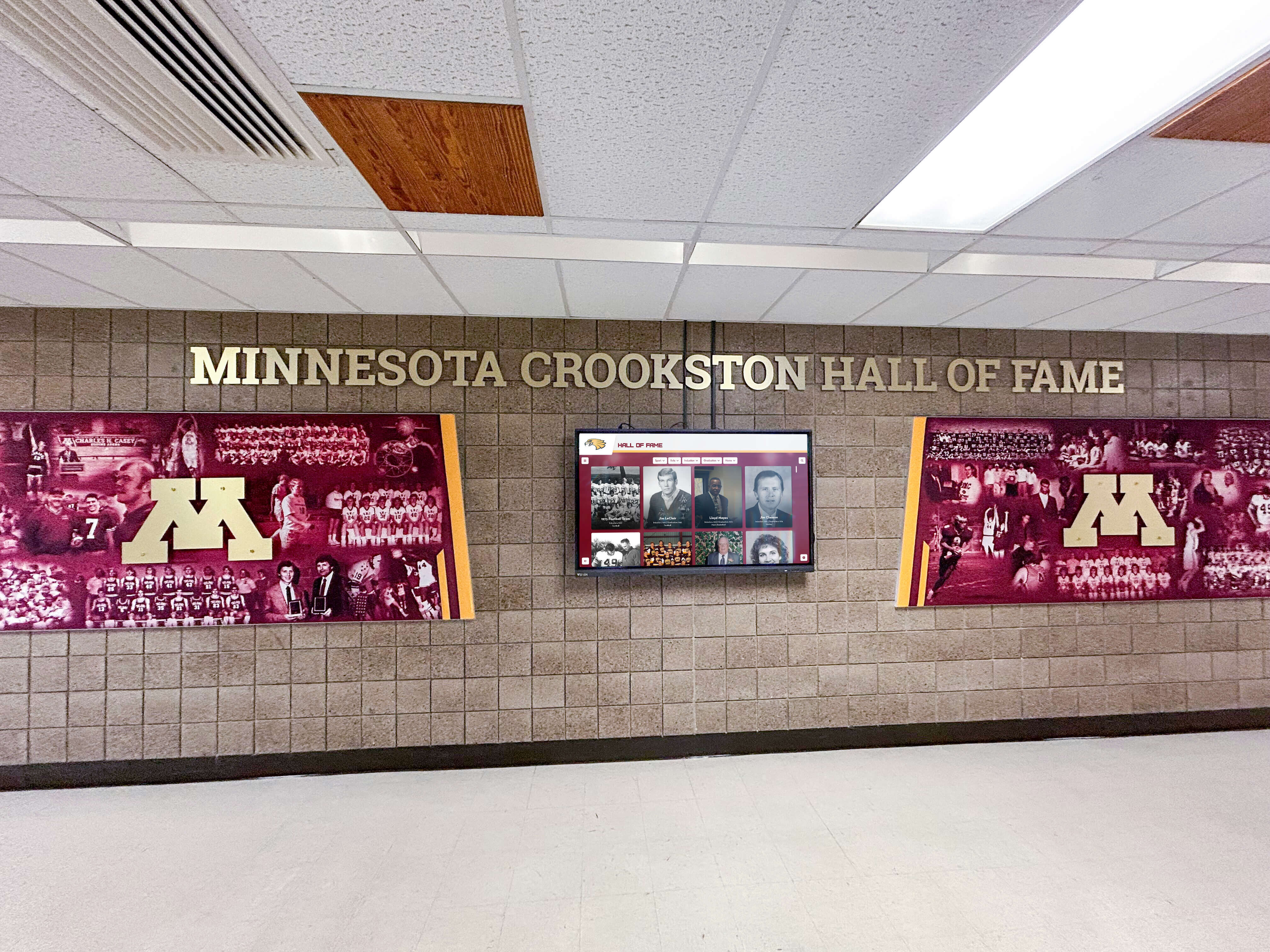
Budget Considerations and Funding Strategies
Understanding financial requirements helps schools develop sustainable recognition programs delivering maximum impact within available resources.
Investment Components
Technology Infrastructure: Initial investments include display hardware ranging from $2,000-$8,000 per screen depending on size and features, mounting systems and enclosures providing security and professional appearance, software platform subscriptions typically $1,200-$3,500 annually, installation costs including electrical and networking requirements, and content development representing substantial time investments initially.
Ongoing Operational Costs: Annual expenses include software platform subscriptions and support, content development time as ongoing operational expense, minor hardware maintenance and eventual replacement, and professional development ensuring staff maximizes platform capabilities. Most operational costs represent time rather than hard dollar expenses.
Recognition Materials and Events: Beyond digital platforms, comprehensive programs include physical awards for major creative achievements, showcase reception expenses during exhibitions and premieres, program printing for performances and exhibitions, and recording equipment maintaining quality documentation. These complementary investments enhance digital recognition effectiveness.
Funding Approaches
Budget Allocation: Include arts recognition in operating budgets as core educational expense rather than discretionary addition subject to annual reconsideration. Recognition supporting educational programs deserves sustained funding commitment comparable to other instructional technology investments.
Booster and Foundation Support: Engage arts boosters and educational foundations in supporting recognition initiatives. Many supporters willingly fund recognition systems demonstrating tangible program impact and celebrating student achievement visibly. Present recognition as infrastructure investment serving students across many years.
Grant Opportunities: Explore grant funding from arts education foundations, corporate giving programs especially technology companies, local arts councils supporting arts education, and educational technology grants. Many grantmakers fund projects with clear outcomes and sustained impact like permanent recognition systems.
Phased Implementation: Begin with priority content and single display locations, expanding systematically as funding permits rather than delaying until comprehensive funding materializes. Phased approaches demonstrate value building support for continued investment while providing immediate recognition benefits.
Resources on digital recognition budgeting provide detailed financial planning frameworks for comprehensive recognition system implementation.
Future Trends in Arts and Music Recognition
Understanding emerging possibilities helps schools make forward-looking investments while anticipating recognition program evolution.
Augmented Reality Integration
Emerging AR technology enables visitors pointing smartphones at artwork to see artist interviews, view creative process documentation, watch time-lapse creation videos, or explore 3D digital renderings. This layered content enriches recognition while engaging technology-native students through familiar interfaces.
Virtual Reality Experiences
VR technology could enable immersive experiences including virtual exhibition walkthroughs for remote audiences, archived performance viewing from multiple audience perspectives, backstage and rehearsal process documentation in immersive formats, and interactive exploration of complex artwork or performances. As VR becomes accessible, creative recognition will leverage immersive capabilities.
AI-Powered Personalization
Artificial intelligence could customize recognition experiences including recommended content based on visitor interest patterns, automated compilation of student creative portfolios, voice-activated searches enabling natural language queries, and predictive analytics suggesting recognition enhancements. AI integration will make recognition increasingly responsive and personalized.
Social Media Integration
Deeper social media connection will enable direct sharing from recognition displays to student social accounts, hashtag campaigns connecting digital recognition to broader conversations, interactive commenting and reaction systems, and integration with platforms like Instagram highlighting visual creativity. Social connectivity extends recognition reach and impact dramatically.
Conclusion: Celebrating Creative Excellence Comprehensively
Arts and music programs deserve recognition systems matching their educational importance and celebrating creative achievement with the permanence, visibility, and engagement afforded to accomplishments in other domains. When schools implement comprehensive digital showcases documenting performances, exhibitions, competitions, and creative development, they validate that artistic excellence matters equally alongside athletic and academic achievement while inspiring continued creative pursuit across all student populations.
The most effective arts recognition programs share common characteristics including comprehensive documentation across all creative disciplines, multimedia presentation bringing performances and artwork to life, permanent accessibility extending recognition beyond brief exhibition or performance moments, equitable visibility matching recognition provided to other achievement domains, and systematic processes ensuring sustainable operation without overwhelming staff capacity. These programs transform how schools celebrate creativity while strengthening arts program culture and community support.
Digital recognition solutions like Rocket Alumni Solutions provide purpose-built platforms specifically designed for school creative program recognition, offering unlimited capacity for celebrating artistic achievement, rich multimedia presentation capability, intuitive web-based content management, engaging interactive experiences, and proven reliability ensuring long-term success. Additional resources on performing arts recognition, student achievement celebration, and interactive digital displays help schools develop comprehensive recognition honoring creative excellence appropriately.
By investing in thoughtful, comprehensive arts and music showcase systems, schools demonstrate that creative achievement matters, artistic development receives appropriate celebration, diverse excellence deserves permanent recognition, and every student’s creative contributions have lasting value. These recognition programs shape not only what students create during school years but also how they perceive creative expression’s importance, artistic skill’s value, and their place within communities genuinely celebrating creativity’s role in comprehensive education—impacts extending far beyond graduation into lifelong creative engagement and lasting connection to institutions that recognized and honored their artistic achievements appropriately.

































